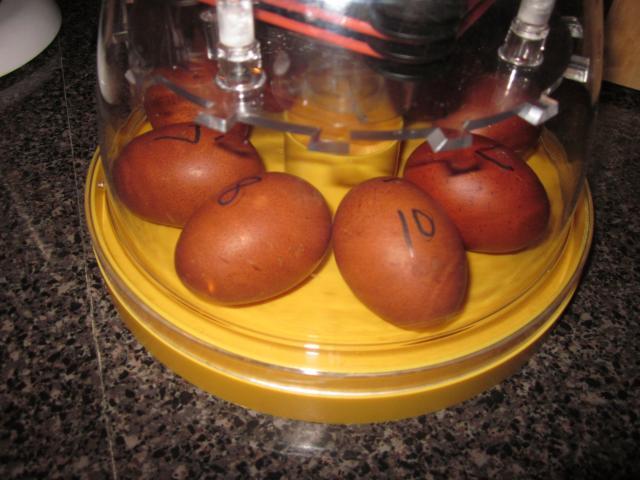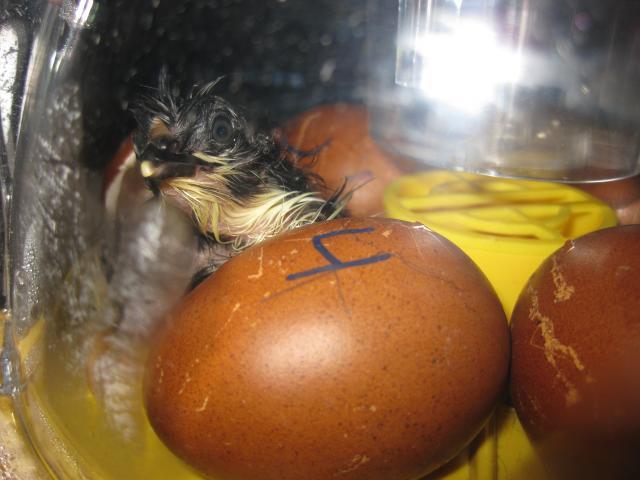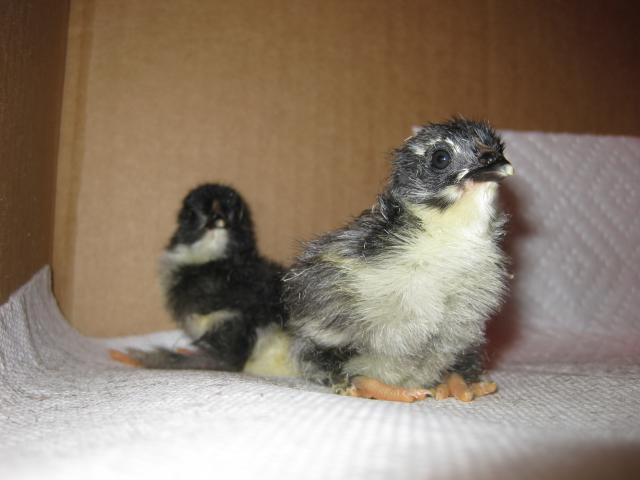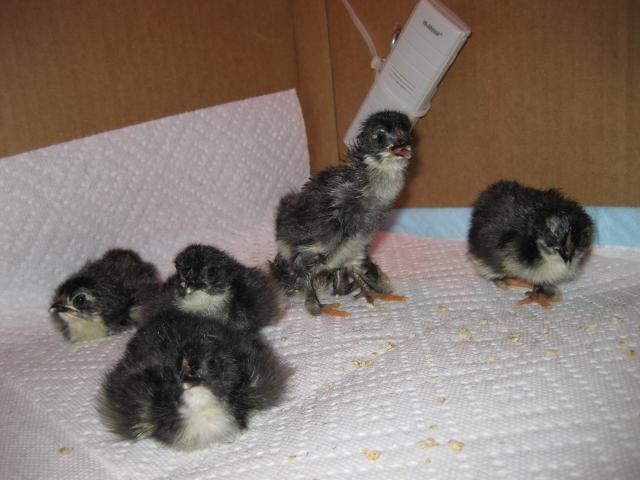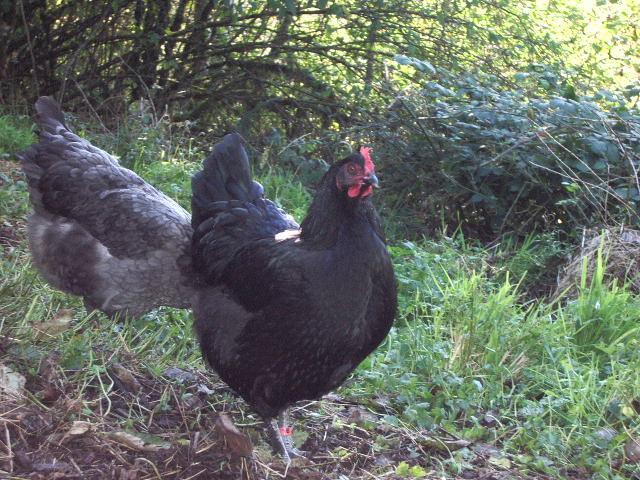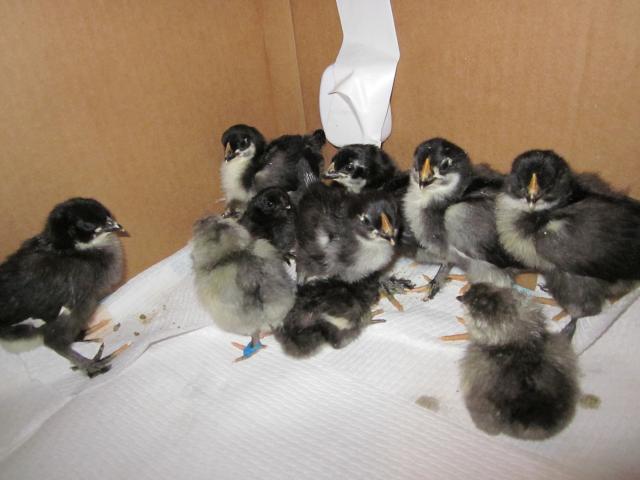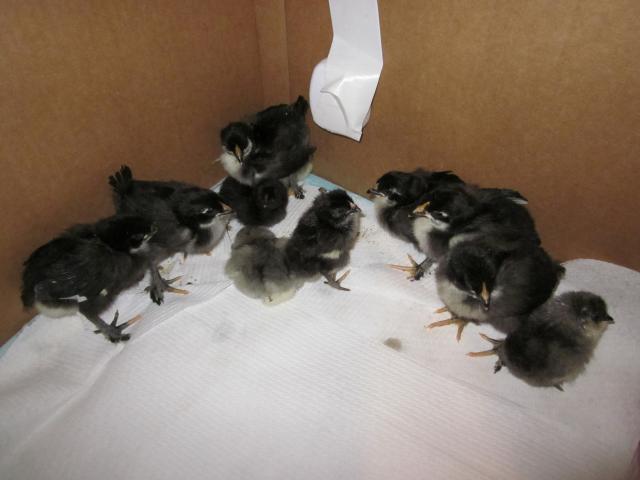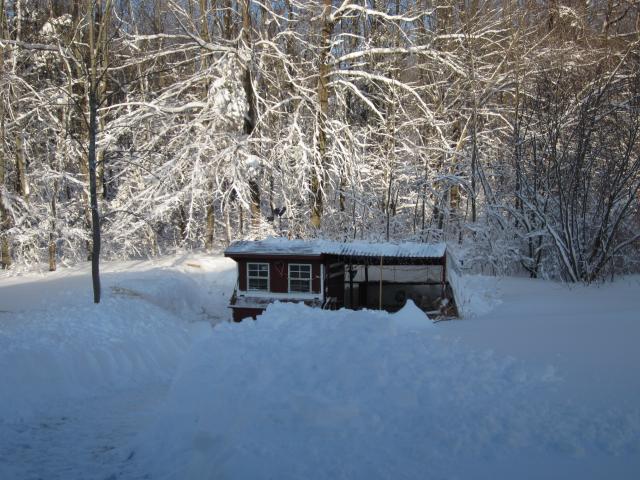- Thread starter
- #221
- Sep 28, 2008
- 4,801
- 18
- 376
This is copied from the French website as I found it nearly impossible to link to the exact page and navigation of the material would be difficult.
General appearance:
Cock:
Body : strong, fairly long and wide especially near the shoulders which are held high.
Neck : long, fairly strong, tending to curve in on top towards the skull; the hackles are made of many long and abundant feathers covering the shoulders well
Back : long, flat, slightly concave towards the rear
Saddle : large, slightly raised but not rounded, covered with many lancets
Breast : strong and large
Abdomen : well developed
Wings : short , kept close to the body
Tail : strong at its base, quite short, fairly up without going over 45 °
Head : average size, slightly flat and long
Comb : simple, of an average size, with a fairly rough texture. Sharp edges. The lobe not touching the nape
Wattles : average size, red with a fine texture
Ear-lobes : average size, red and long
Face : red coloured with or without down
Eyes : bright, with a orangey-red iris
Beak : Quite strong, slightly hooked and horn-coloured
Shanks : big, without vulture hocks
Tarsi : average size, with some feathers white or lightly pink coloured for all the varieties except for the BLACK, BROWN-RED and BIRCHEN Marans
were grey or dark grey is permitted, although not preferred, for both sexes. Four long and well separated toes with the outer one sparsely feathered.
The claws are white or horn- coloured
I have highlighted the exerpt about the head... Any pictures guys or does this bore you??? We can do something different...you choose...
General appearance:
Cock:
Body : strong, fairly long and wide especially near the shoulders which are held high.
Neck : long, fairly strong, tending to curve in on top towards the skull; the hackles are made of many long and abundant feathers covering the shoulders well
Back : long, flat, slightly concave towards the rear
Saddle : large, slightly raised but not rounded, covered with many lancets
Breast : strong and large
Abdomen : well developed
Wings : short , kept close to the body
Tail : strong at its base, quite short, fairly up without going over 45 °
Head : average size, slightly flat and long
Comb : simple, of an average size, with a fairly rough texture. Sharp edges. The lobe not touching the nape
Wattles : average size, red with a fine texture
Ear-lobes : average size, red and long
Face : red coloured with or without down
Eyes : bright, with a orangey-red iris
Beak : Quite strong, slightly hooked and horn-coloured
Shanks : big, without vulture hocks
Tarsi : average size, with some feathers white or lightly pink coloured for all the varieties except for the BLACK, BROWN-RED and BIRCHEN Marans
were grey or dark grey is permitted, although not preferred, for both sexes. Four long and well separated toes with the outer one sparsely feathered.
The claws are white or horn- coloured
I have highlighted the exerpt about the head... Any pictures guys or does this bore you??? We can do something different...you choose...



